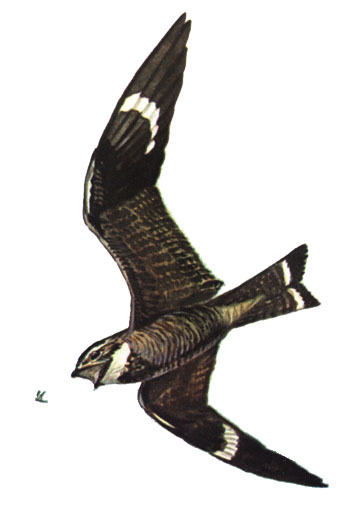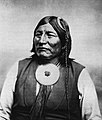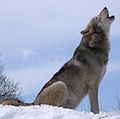Nighthawk File:Falcon1.jpg
File:George1.jpg
[1]
File:Falcon1.jpg
File:George1.jpg
[1]
Me and Cars
Indian Chiefs
Animal pictures
Pictures for Thor
-
Thor's favorite flower
Roses
flowers
ROTC
Apache
Of the hundreds of peoples that lived and flourished in native North America, few have been so consistently misrepresented as the Apacheans of Arizona and New Mexico. Glorified by novelists, sensationalized by historians, and distorted beyond credulity by commercial film makers, the popular image of 'the Apache' — a brutish, terrifying semihuman bent upon wanton death and destruction — is almost entirely a product of irresponsible caricature and exaggeration. Indeed, there can be little doubt that the Apache has been transformed from a native American into an American legend, the fanciful and fallacious creation of a non-Indian citizenry whose inability to recognize the massive treachery of ethnic and cultural stereotypes has been matched only by its willingness to sustain and inflate them In general, there seemed to be a pattern between the recently arrived Spanish who settled in villages and Apache bands over a few centuries. Both raided and traded with each other. Records of the period seem to indicate that relationships depended upon the specific villages and specific bands that were involved with each other. For example, one band might be friends with one village and raid another. When war happened between the two, the Spanish would send troops, after a battle both sides would "sign a treaty" and both sides would go home. All Apachean peoples lived in extended family units (or family clusters) that usually lived close together with each nuclear family in separate dwellings. An extended family generally consisted of a husband and wife, their unmarried children, their married daughters, their married daughters' husbands, and their married daughters' children. Thus, the extended family is connected through a lineage of women that live together (that is, matrilocal residence), into which men may enter upon marriage (leaving behind his parents' family). When a daughter was married, a new dwelling was built nearby for her and her husband. Among the Navajo, residence rights are ultimately derived from a head mother. Although the Western Apache usually practiced matrilocal residence, sometimes the eldest son chose to bring his wife to live with his parents after marriage. All tribes practiced sororate and levirate marriages. All Apachean men practiced varying degrees of avoidance of his wife's close relatives — often strictest between mother-in-law and son-in-law. The degree of avoidance differed in different Apachean groups. The most elaborate system was among the Chiricahua where men must use indirect polite speech toward and were not allowed to be within visual sight of his relatives that he was in an avoidance relationship with. His female Chiricahua relatives also did likewise to him. Several extended families worked together as a local group, which carried out certain ceremonies, and economic and military activities. Political control was mostly present at the local group level. Local groups were headed by a chief, a male who had considerable influence over others in the group due to his effectiveness and reputation. The chief was the closest societal role to a leader in Apachean cultures. The office was not hereditary and often filled by members of different extended families. The chief's leadership was only as strong as he was evaluated to be — no group member was ever obliged to follow the chief. The Western Apache criteria for evaluating a good chief included: industriousness, generosity, impartiality, forbearance, conscientiousness, and eloquence in language. Many Apachean peoples joined together several local groups into bands. Band organization was strongest among the Chiricahua and Western Apache, while in the Lipan and Mescalero it was weak. The Navajo did not organize local groups into bands perhaps because of the requirements of the sheepherding economy. However, the Navajo did have the outfit, a group of relatives that was larger than the extended family, but not as large as a local group community or a band. On the larger level, the Western Apache organized bands into what Grenville Goodwin called groups. He reported five groups for the Western Apache: Northern Tonto, Southern Tonto, Cibecue, San Carlos, and White Mountain. The Jicarilla grouped their bands into moieties perhaps influenced by northeastern Pueblos. Additionally the Western Apache and Navajo had a system of matrilineal clans that were organized further into phratries (perhaps influence by western Pueblos). The notion of tribe in Apachean cultures is very weakly developed essentially being only a recognition "that one owed a modicum of hospitality to those of the same speech, dress, and customs."[13] The seven Apachean tribes had no political unity (despite such portrayals in common perception[14]) and often were enemies of each other — for example, the Lipan fought against the Mescalero just as with the Comanche. Apachean religious stories relate two culture heros (one of the sun/fire, Killer-Of-Enemies/Monster Slayer, and one of water/moon/thunder, Child-Of-The-Water/Born For Water) that destroy a number of creatures (including the Vagina dentata) that are harmful to humankind. Another story is of a hidden ball game where good and evil animals decide whether or not the world should be forever dark. Coyote, the trickster, is an important being that usually has inappropriate behavior (such as marrying his own daughter, etc.). The Navajo, Western Apache, Jicarilla, and Lipan have an emergence story while this is lacking in the Chiricahua and Mescalero.[22] Most Southern Athabascan “gods” are personified natural forces that run through the universe and are used for human purposes through ritual ceremonies. The following is a formulation by Basso for the Western Apache's concept of diyí’: The term diyí’ refers to one or all of a set of abstract and invisible forces which are said to derive from certain classes of animals, plants, minerals, meteorological phenomena, and mythological figures within the Western Apache universe. Any of the various powers may be acquired by man and, if properly handled, used for a variety of purposes.[23] These ceremonies are known by medicine men (shamans) or can be acquired by direct revelation to the individual (see also mysticism). Different Apachean cultures had different views of ceremonial practice. Most Chiricahua and Mescalero ceremonies were learned by personal religious visions while the Jicarilla and Western Apache used standardized rituals as the more central ceremonial practice. Important standardized ceremonies include the puberty ceremony (sunrise dance) of young women, Navajo chants, Jicarilla long-life ceremonies, and Plains Apache sacred-bundle ceremonies. Certain animals are considered spiritually evil and are prone to cause sickness: owls, snakes, bears, coyotes. Many Apachean ceremonies use masked representations of religious spirits. Sandpainting is important to the Navajo, Western Apache, and Jicarilla. Both the use of masks and sandpainting are believed to be a product of cultural diffusion from neighboring Pueblo cultures.[24] The Apaches participate in many spiritual dances including the rain dance, a harvest and crop dance, and a spirit dance. These dances were mostly for enriching their food resources.
































































